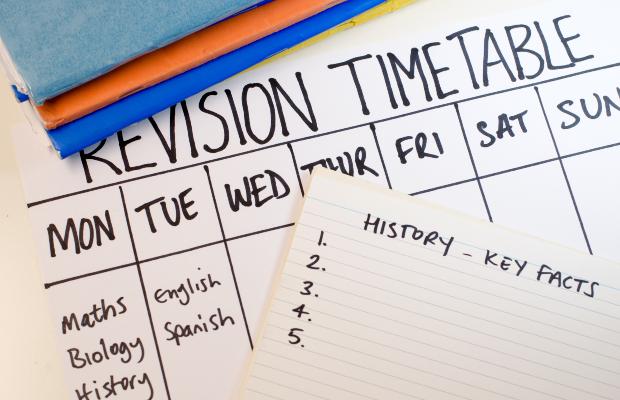I Really need help with these ionic equations please!!
I'm stuck on how to write ionic equations for these. My teacher confused me!
Ca(NO3)2+2Na= 2NaNO3+Ca
FeSO4+Zn= ZnSO4+Fe
2HCl+Fe= FeCl2+H2
2HNO3+Mg= Mg(NO3)2+H2
Na2CO3+ 2K= K2CO3+2Na
Ca(NO3)2+2Na= 2NaNO3+Ca
FeSO4+Zn= ZnSO4+Fe
2HCl+Fe= FeCl2+H2
2HNO3+Mg= Mg(NO3)2+H2
Na2CO3+ 2K= K2CO3+2Na
I'll give you the steps, but if you're still struggling then, DM me and I'll try helping.
1) Breaking down compounds in aqueous solution into their ionic form, e.g. FeSO4 becomes Fe(2+) + SO4(2-) and ZnSO4 becomes Zn(2+) + SO4(2-)
2) Look at your equation. There should be an ion that is present in both the reactants and products. In the case above, it's SO4 (2-). Cross this out on both sides.
3) You should be left with something like Fe(2+, aq) + Zn(s) ------------> Zn(2+, aq) + Fe(s)
1) Breaking down compounds in aqueous solution into their ionic form, e.g. FeSO4 becomes Fe(2+) + SO4(2-) and ZnSO4 becomes Zn(2+) + SO4(2-)
2) Look at your equation. There should be an ion that is present in both the reactants and products. In the case above, it's SO4 (2-). Cross this out on both sides.
3) You should be left with something like Fe(2+, aq) + Zn(s) ------------> Zn(2+, aq) + Fe(s)
Easiest thing would be take a pause, think about what things changed from ions to atoms and vice versa and thus are included in the ionic equation.
Original post by Miakat1602
I'm stuck on how to write ionic equations for these. My teacher confused me!
Ca(NO3)2+2Na= 2NaNO3+Ca
FeSO4+Zn= ZnSO4+Fe
2HCl+Fe= FeCl2+H2
2HNO3+Mg= Mg(NO3)2+H2
Na2CO3+ 2K= K2CO3+2Na
Ca(NO3)2+2Na= 2NaNO3+Ca
FeSO4+Zn= ZnSO4+Fe
2HCl+Fe= FeCl2+H2
2HNO3+Mg= Mg(NO3)2+H2
Na2CO3+ 2K= K2CO3+2Na
Split all the terms in the equation into their relevant ions, i.e for Ca(NO3)2, split it up into Ca 2+ and NO3-. If you are stuck, have a look for what ions make up the specific compounds.
Remember, when balancing an equation, you must always have the same number of atoms/ions on either side of the arrow/= sign.
Also remember, that for a compound, you must aim for it to be neutral (have a charge of 0) overall.
Try drawing out beakers underneath each component of the reaction and stating what ions you have. From there, balance the charges. For example, with Na2CO3, you need 2 Na+ charges, and 1 CO3 2- charge, as the overall charge is 0.
(edited 6 years ago)
Quick Reply
Related discussions
- ionic equations
- A-Level chemistry question
- chemistry help please
- AQA A Level Chemistry Ionic equations
- Etha
- alevel chemistry question
- Chemistry A-level OCR transition metals
- A LEVEL CHEMISTRY - Amount of substances question help
- help with workings pls
- A-Level Group 7 Chemistry help
- Help chemistry
- Electrostatic forces
- AQA A Level Chemistry Paper 3 20th June 2018 Unofficial Markscheme
- protein a level biolgy AqA
- IGCSE Edexcel Chemistry 2023
- ionic equations
- Edexcel A-Level Chem Paper 1 Advanced Inorganic and Physical Chemistry [Exam Chat]
- Nucleophilic substitution - Need help
- What is the difference between Macromolecules and Giant Covalent?
- enthalpy change of sol
Latest
Trending
Last reply 17 hours ago
went from 3s to 9s with (literally) night before revision - ask me anythingGCSEs
59
Last reply 19 hours ago
Based on 2023 GCSEs, will grade boundaries be higher or lower in 2024?GCSEs
15
Trending
Last reply 17 hours ago
went from 3s to 9s with (literally) night before revision - ask me anythingGCSEs
59
Last reply 19 hours ago
Based on 2023 GCSEs, will grade boundaries be higher or lower in 2024?GCSEs
15




